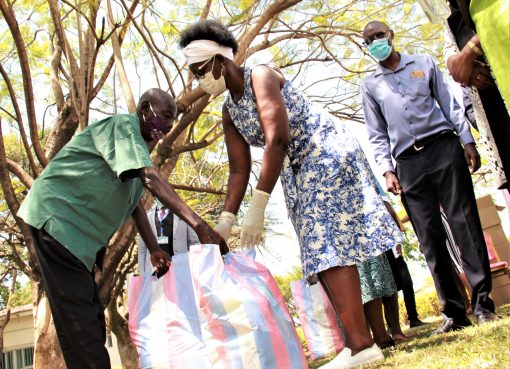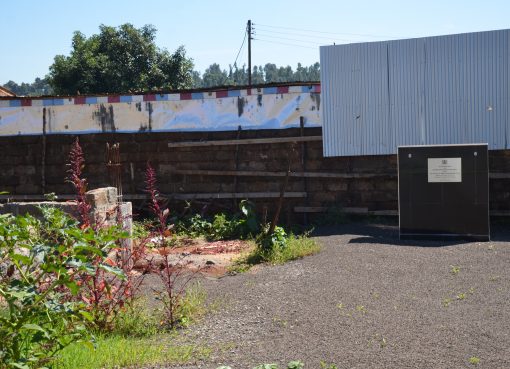The planned construction of a second 35-megawatt (MW) power plant at the Menengai Crater geothermal fields in Nakuru is expected to start in earnest following the award of a Sh8.89 billion infrastructure design and building contract to a Japanese company.
Toyota Tsusho Corporation (TTC) has been picked by a London-based power firm Globeleq as the general contractor, who will design the infrastructure for the power plant as well as procure the necessary material and equipment.
Technically known as the engineering, procurement, and construction (EPC) contractor, the Japanese conglomerate is expected to commence work during the first quarter of 2023.Globeleq Chief Executive Officer Mr Mike Scholey said his firm and the Nagoya-based company, a unit of the Toyota Motor Corporation had also executed a long-term service agreement (LTSA) which will take effect once the power plant reaches commercial operations in 2025.
In 2021, Globeleq acquired a majority stake in Quantum Power East Africa, one of the three independent power producers (IPPs) that Geothermal Development Company (GDC) awarded exclusive rights to set up steam driven power plants under a build-own-operate model.
While indicating that the steam turbine and generator will be manufactured by Fuji Electric, Mr Scholey stated that the project aims at boosting Kenya’s efforts to fully transition to clean energy and lowering the cost of electricity.
The signing of the contract comes two months after Globeleq entered into a financing agreement with the African Development Bank (AfDB), the Eastern and Southern African Trade and Development Bank (TDB) and Finnfund.
The IPP alongside, Sosian Menengai Geothermal Power and Or Power Twenty Two Company had been selected in 2013 through competitive bidding to build, operate and own the first three power plants in Menengai, each generating 35 Mega Watts to pump into the national grid a cumulative 105 Mega Watts.
Mr Scholey indicated that construction of the power plant is scheduled to be complete by September 2025. British Nation Investment (BII – formerly CDC) holds 70 percent of shares in Globeleq while the rest are owned by Norwegian DFI Norfund.
The CEO stated “As an active participant in the Kenyan energy sector for many years, the Menengai geothermal project is our first geothermal project. It fully aligns with our focus on quality investments which utilize renewable energy sources to create clean, reliable and cost-effective energy for the country and be an active part of the solution to the climate crisis,’’
The announcement follows a recent commitment by the Kenyan and UK Governments at COP27 in Egypt to fast-track green investment projects worth Sh500 billion in the country, including the Menengai project.
Currently an estimated 80 per cent of Kenya’s electricity is from clean sources mainly geothermal and wind and Kenya has set the ambitious target of a 100 per cent transition to clean energy by 2028.
President Dr William Ruto disclosed the ambitious target at the Conference of the Parties to the United Nations Framework Convention on Climate Change (COP27) in Egypt.
Dr Ruto underscored the importance of ramping up the use of clean energy as a way of helping Kenya lower the cost of electricity by eliminating the fuel cost charge that thermal power plants charge for supporting the grid especially at peak demand or during low hydro-production due to drought.
Menengai Project is the second large-scale geothermal field being developed in Kenya after the Olkaria units in Naivasha Sub-County whose exploration is carried out by the Kenya Electricity Generating Company (KenGen).
Mr Scholey noted that the project upon completion will significantly boost Kenya’s efforts of a 100 per cent transition to clean energy to provide cheap electricity besides protecting the environment from the pollution of the thermal power plants.
CEO for Africa Division of TTC Mr Richard Bielle noted that in addition to geothermal power development and other undertakings for tapping the nation’s potential, the firm was also fostering skills and enterprise in Kenya’s automobile industry.
“TTC has been involved in Kenya since 1962. In 2015 Toyota and Hyundai Engineering completed the construction of KenGen’s Olkaria I and IV which have a combined output of 280 megawatts (MW). Turbines and generators for the plant were supplied by Toshiba Corporation,” added Mr Bielle.
He observed that it was Toyota’s first major deal outside the motor vehicle business in Kenya.
Kenya has been grappling with high power bills mainly because of the fuel cost charge— the money that Kenya Power collects from consumers on behalf of the thermal power generators.
The charge significantly rises when fuel prices go up and when the amount of oil consumed by the generators increases. Increased use of electricity from fuel generators hits consumers with high power bills due to the high cost of fuel, underscoring why cutting reliance on thermal plants is key to lowering the cost of electricity.
For example, Kenya Power disclosed that the uptake of electricity from thermal energy plants jumped from 876-gigawatt hours (GWh) to 1,539 GWh in the 2021/22 financial year.
Construction works are also ongoing at Sosian Menengai Geothermal Power Plant after receiving Sh6.5 billion funding from the China-based Zhejiang Kaishan Compressor. The two parties further entered into a 14-year Sh1.8 billion operations and maintenance of systems agreement.
Menengai phase one is part of a 5,000 MegaWatt project by the government to produce affordable, reliable and green energy. The state corporation has drilled steam wells with an output of 165 Mega Watts. This steam is more than enough for the first 105MW of electricity expected to be generated by the three IPPs.
According to GDC Managing Director and CEO Engineer Jared Othieno once the three IPPs are fully operational electricity generated from the multibillion-shilling Menengai Geothermal Project will cost at least Sh7 per kilowatt less than diesel or hydro power.
GDC has already constructed the steam gathering system while Kenya Electricity Transmission Company (Ketraco) has set up a 132 kilovolt (kV) substation that will transmit electricity from the three power plants.
Under the arrangement — christened Menengai Model- GDC was to take care of upfront risks and then invite private sector players to construct, own and operate the plants for 25 years.
“When electricity is finally generated at Menengai, our country will save more than Sh13 billion as fuel levy annually and ultimately lower the cost of power bills,” said Engineer Othieno, adding that Kenya would save some Sh45 billion spent to buy diesel.
The Menengai GDC plant, said the CEO had the capacity to produce enough electricity to serve almost 500,000 homesteads and 300,000 businesses.
He added “We are proposing to have industrial parks to be constructed adjacent to our power plants. They will benefit from our tariffs, which will be the lowest at US $7 cents per kWh. The industries will also utilize the readily available geothermal steam for processing at very competitive rates,”
GDC began drilling at Menengai site in February 2011 and has so far sunk over 43 wells, 24 of which have been tested giving 165 MW. The rest of the wells are still undergoing tests.
GDC plans to pump an extra 1065mw into the national grid in the next ten years which will be generated from Menengai (465 Mega Watts), Baringo-Silale (300 MegaWatts) and 300 Megawatts from South Rift region as the government seeks more geothermal energy.
With a proven potential of 7,000 megawatts, geothermal energy from Kenya’s geologically active Great Rift Valley forms the cornerstone of a government scheme to boost energy production.
Records from the Ministry of Energy indicate that geothermal is the leading contributor of power to the national grid, accounting for 44.12 percent followed by hydropower at 26.98 percent. Thermal is below 13 percent. This is in contrast to 2014 when the share of thermal was at a high of 34.49 percent due to erratic rains that reduced hydropower sources.
Kenya has been deepening supply of power from cheaper sources such as wind and steam. This is expected to translate to reduced power bills for consumers.
Data from the Energy and Petroleum Regulatory Authority shows that geothermal is the biggest contributor of power to the national grid, accounting for 44.12 percent of the total supply.
According to the Renewables Global Status 2021, Kenya tops in Africa with 700 megawatts (MW) of geothermal power, retaining its place compared to last year.
The US has the largest geothermal generating capacity with 2,500 megawatts followed by the Philippines (1,900 MW), Indonesia (1,800 MW), Turkey (1,100 MW), New Zealand (1000 MW), Mexico (900 MW), Italy (800 MW) and Iceland (750 MW).
Kenya beats technological heavyweight Japan which has been ranked tenth with an output of 500 MW.
The rest of the world shares 950 MW. Ethiopia is the only other African country with developed geothermal energy (7 MW).
Geothermal is widely considered a preferable, low-cost renewable energy source due to low emissions when compared to thermal sources.
It is also cheaper than thermal power when used as an alternative to mitigate depressed hydropower generation due to drought. Kenya has a target of 5 gigawatts (GW) geothermal capacity by the year 2030.
Green energy power plants under development in Kenya include the 300 MW Lake Turkana Wind Power Plant, which is the single largest wind power plant in Africa, the 70 MW Olkaria 1 and the 140 MW OlKaria V.
By Anne Mwale





